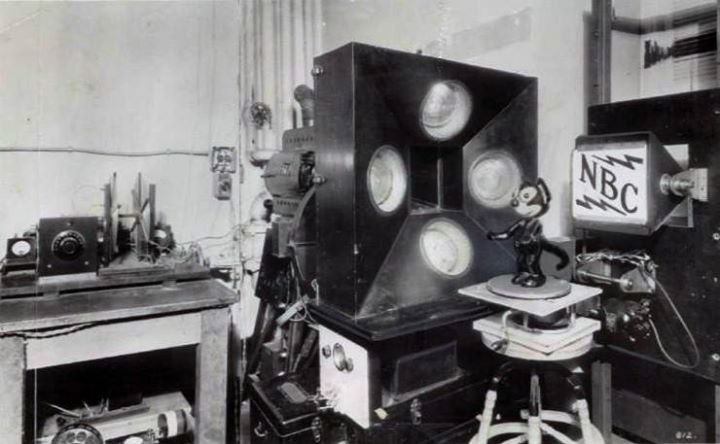
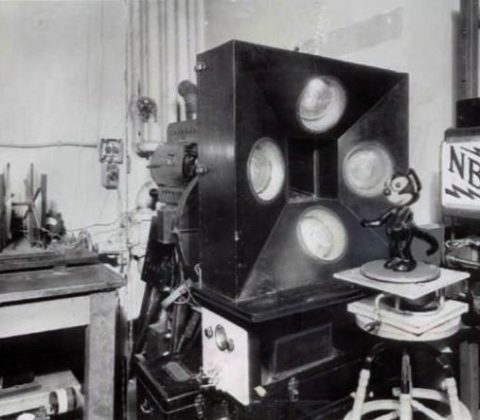
December 22, 1931…First Empire State Broadcast & TV Test History Update
December 22, 1931…First Empire State Broadcast & TV Test History Update
On this day in 1931, NBC made it’s first experimental television broadcast from the new Empire State Building transmitter.
Since the story of RCA’s early television transmission test sites is a bit muddled, I am taking this opportunity to clarify a few things with new research.
RCA’s first experimental television transmissions are reported to have begun in 1928 on station W2XBS at 7 Van Cortlandt Park area in the Bronx. The images were produced by a GE made Alexanderson mechanical disc camera.
Rare Details Of RCA’s First Reseach Lab…7 Van Cortlandt Park South
My research has lead to new information that no one else includes. It appears that within a few months, testing moved to 411 Fifth Avenue, a few blocks south of NBC’s 711 Fifth Avenue HQ. The two hour nightly broadcasts made from there began March 22, 1929. At this link is an article about the 411 building with the very detailed television part in the lower third of the article.
http://daytoninmanhattan.blogspot.com/2012/09/the-unique-1915-no-411-fifth-avenue.html
In early 1930, the Alexanderson camera and transmission equipment was moved to the Roof Garden Theater on the top floor of the New Amsterdam Theater Building, transmitting 60 line pictures in the new 2-3 mHz band allocated to television.
Those locations, are where the famous 13 inch Felix the Cat figure, made of paper mache, was placed on a record player turntable and broadcast using a mechanical scanning disk to a scanning disk receiver. The image received was only 2 inches tall.
Early in 1931 RCA’s W2XBS began to transmit from the RCA/NBC headquarters at 711 5th Avenue. The image of the actor with the Alexanderson camera is thought to be at the 711 building.
The Empire State Building was completed in May of 1931, and RCA leased the 85th floor for a studio and transmitter location for experimental television broadcasts. RCA, through its broadcasting division NBC, applied to the Federal Radio Commission on July 1, 1931 for construction permits for the sight and sound channels of a television station, which were issued on July 24, 1931.
The call sign W2XF was issued in December 1931 for the sight channel of that station on an assigned frequency of 44Mc. The sound channel of the TV station was separately licensed as W2XK for a 2.5Kw transmitter to operate on 61Mc. Both transmitters were located on the 85th floor and used separate vertical dipole antennas.
In early 1933, the mechanical scanning disc camera was still in use, but experiments on an electronic receiving tube were underway with the early kinescope images appearing green (like an oscilloscope) as only green phosphor was available. It would be a few years before white phosphor was discovered and used in kinescopes. More on this story soon.
In 1936, the Empire State Building’s tall tower like structure was added as a mooring mast for blimps. The winds proved to be too strong and there were several near accidents in mooring tests, but it did make for a great new antenna mount.
By the way, the last known sighting of the historic Alexanderson mechanical camera was in a display at the RCA Pavilion at the 1939 Worlds Fair. -Bobby Ellerbee
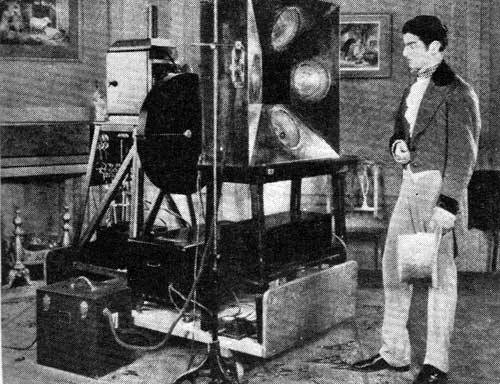
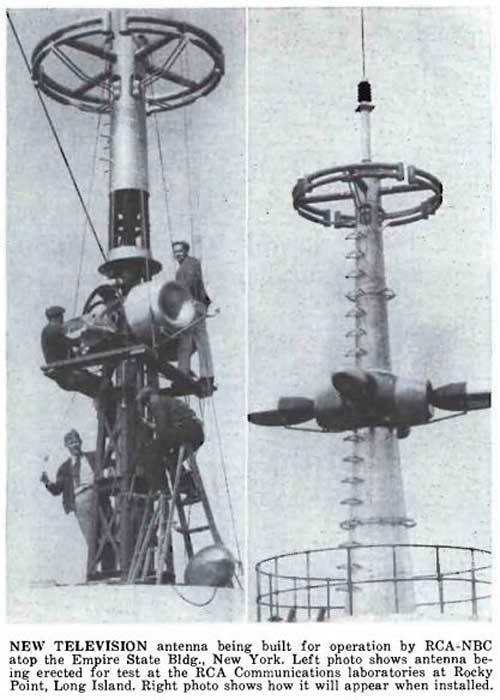
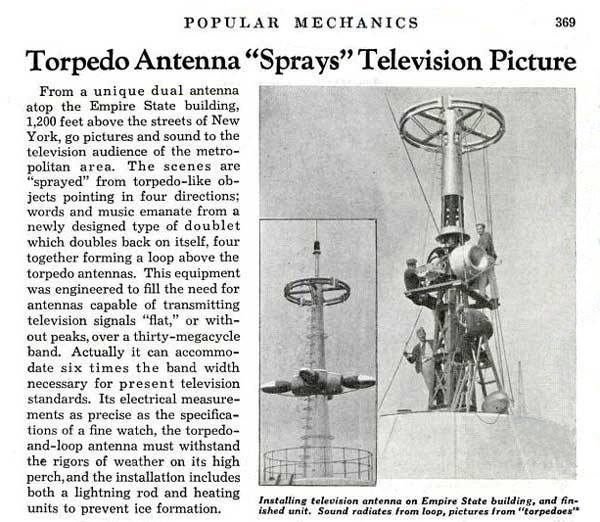
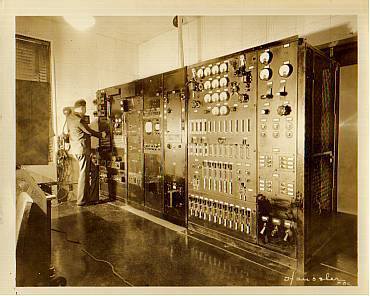
We used the Felix the Cat figurine in 1995 at the end of the U.S. Advanced Television process that gave birth to the ATSC digital television we have as our TV standard today. When testing was over and all the parties got together for a joint interoperability test we ran a set of videos. The credits for all of the people involved in ACATS, the ATTC (where I worked), the CRTC, the FCC and MSTV were over the original Felix figurine turning on a motorized lazy Susan on a blue background shot in 1080i29.97. It was a nice tip o’ the hat to the analog era.
“Felix the Cat rose to TV stardom in the late 1920s, when the American communications giant RCA chose him as a test subject for its television research. The lighting required to reflect images into the primitive television camera of the day proved far too hot for humans to stand, so using an inanimate object was the only option. The engineers at RCA Research Labs purchased this papier maché figurine of Felix from the famed New York City toy store FAO Schwarz, just up 5th Avenue at 57th Street from their own offices at Rockefeller Centre. Felix fell off his turntable often: first his tail fell off, then his head, which was reattached using a drumstick. It was in 1928 that RCA first broadcast Felix from the Empire State Building. Later, Felix was honoured when RCA transmitted his image on the first commercial television broadcast in 1939, as a lead-up to the formal unveiling of television at the New York World’s Fair. Thus, Felix the Cat became television’s first star! Before his television debut, this cat enjoyed many lives in animated film. Created by Otto Messmer, the initial series played from 1920 to 1928. The fun-loving cat made a comeback in 1936, starring in three short films. Then, in 1960, a new series was produced for television that featured the debut of Felix’s magic bag of tricks. Felix’s most recent performance occurred in 1991 at the Ed Sullivan Theatre in New York City as part of the first demonstration of high-definition television in the USA. Felix can be viewed at the MZTV Museum of Television in Liberty Village. The museum was established by Moses Znaimer, creator of over 20 independent stations and channels including CityTV, Bravo, MuchMusic, and CablePulse24, and the founder of ZoomerMedia Limited.”
from: https://luminatofestival.com/Trove
Felix is and has been in the possession of the MZTV museum in Toronto Canada.
I’ve seen the Felix photo a bunch of times/places but never the photo of the mannequin (that *is* a mannequin right?) in front of that contraption.